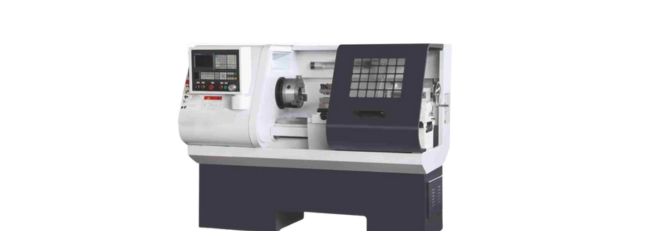The CNC lathe market in 2025 is defined by rapid technological advancement, increased demand for machine versatility and a growing emphasis on digital integration. For manufacturers, engineers, machinists and procurement teams, understanding the evolving landscape is crucial to maintaining competitive operations. From the precision of desktop models to the brute power of industrial-scale heavy duty CNC lathe machines, today’s decision-makers face a diverse array of options.
This transformation is not solely hardware-driven. Software and smart technology-especially modern CNC lathe controllers-are redefining the operational capabilities of even the most basic machines. In this article, we will explore how users can effectively navigate the current market, compare emerging machine categories, evaluate smart features and identify key trends shaping the future of CNC lathe machines.
A New Era of CNC Lathe Machines in 2025
The year 2025 brings a mature yet dynamic market for CNC lathes. Technological progress has made once high-end features standard across mid-range machines, while new user expectations demand greater adaptability, automation and digital oversight.
CNC lathe machines today may offer:
- Multi-functional capabilities.
- Smart sensors and diagnostics.
- Real-time data reporting and predictive maintenance.
- Remote operation through cloud-connected CNC lathe controllers.
These enhancements benefit industries ranging from aerospace and defense to custom prototyping and general manufacturing. Consequently, the range of CNC lathe for sale listings includes models tailored for both entry-level operations and high-throughput industrial use.
Desktop CNC Lathe Machines: Precision in a Compact Package
One of the most accessible and rapidly advancing segments in 2025 is the desktop CNC lathe category. These machines cater to smaller workshops, R&D labs, vocational institutions and prototype designers who prioritize precision without large-scale production needs.
Key benefits of desktop models include:
- Space efficiency: Ideal for environments with limited floor space.
- Material flexibility: Many now support aluminum, brass and select steels.
- Digital controls: Most come pre-equipped with easy-to-use CNC lathe controllers with touchscreen interfaces and real-time simulations.
They may not match the raw power of a heavy duty CNC lathe, but their affordability, fast learning curve and plug-and-play operation make them invaluable for iterative design and training applications.
Mid-Range CNC Lathes: Adaptability for Growing Businesses
In 2025, mid-range CNC lathe machines continue to strike the perfect balance between power and affordability. These machines are often favored by expanding fabrication businesses and suppliers involved in short- to medium-run production.
They offer:
- Live tooling capabilities.
- Moderate bed lengths and chuck sizes.
- Advanced CNC lathe controller functions such as tool path optimization and collision detection.
These systems also appear frequently among CNC metal lathe, offering strong ROI potential for businesses upgrading from manual lathes or limited-feature CNCs. Their ability to handle both soft and hard materials makes them highly adaptable across industries.
Heavy Duty CNC Lathe Machines: Power, Scale and Automation
At the upper end of the spectrum in 2025 are heavy duty CNC lathe machines. These are engineered for high-load operations and continuous multi-shift usage, making them essential in industries like automotive, aerospace and industrial machinery production.
Defining features often include:
- Large swing diameters and extended bed lengths.
- High torque output and rigid cast iron frames.
- Full automation support, including robotic part handling and tool changers.
Lathe Controllers and the Rise of Intelligent Machining
The real breakthrough in 2025 lies in the intelligence of CNC lathe controllers. No longer just input/output interfaces, controllers are now integrated hubs that drive decision-making and optimize productivity.
Key advancements include:
- Edge computing for low-latency control.
- Real-time performance dashboards.
- Self-tuning systems that adapt to vibration, load and tool condition.
- Remote monitoring and diagnostics.
Whether used on a compact or heavy duty CNC lathe, these smart controllers are pushing shops closer to fully autonomous machining. Companies can monitor tool paths, energy use and production metrics from anywhere, allowing operators to react faster to potential issues and improve throughput.
Evaluating CNC Lathe Companies in 2025
Choosing a reliable supplier remains as critical as selecting the machine itself. The top CNC lathe companies in 2025 are not just equipment providers-they are long-term technology partners.
When evaluating vendors, buyers may prioritize:
- Global service networks.
- Firmware and software upgrade pathways.
- Local spare part availability.
- Training and support infrastructure.
Industry leaders now offer subscription-based maintenance, digital twins for simulation and hybrid leasing models to accommodate budget-conscious businesses.
Bhavya has been a leader in machine tool technology and also gaining traction by offering feature-rich machines. It’s vital to evaluate not just pricing, but long-term operational costs, machine longevity and controller flexibility.
Trends in the CNC Lathe Machines
The CNC lathe landscape in 2025 is characterized by:
- Growth in online direct-to-buyer platforms.
- Increased availability of refurbished and certified pre-owned machines.
- Custom-built lathes tailored to specific industry use cases.
Conclusion
As 2025 progresses, the CNC lathe industry is demonstrating how precision manufacturing continues to evolve beyond physical machinery. The integration of smart controllers, automated handling and modular design has redefined how businesses view production capabilities and scalability.
From budget-friendly desktop models to high-capacity heavy duty CNC lathe systems, buyers must evaluate machines based not only on specs but also on their ability to integrate digitally, support intelligent machining and adapt to changing production demands. This is no longer just a market of turning tools-it’s a network of connected, predictive systems capable of transforming manufacturing operations at every level.








